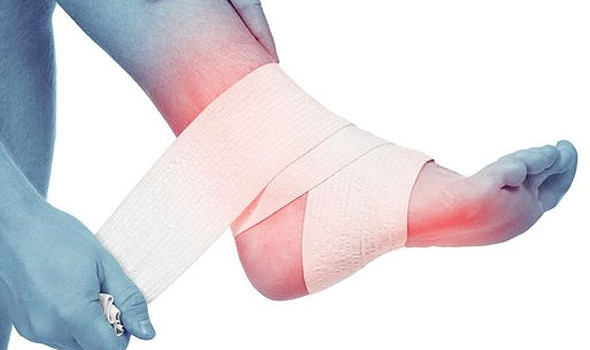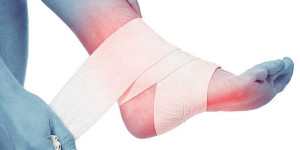The feet and ankles are responsible for bearing the weight of the entire body and supporting the body in walking, standing, running, jumping, and more. As a result of falls, trauma, overuse, or wear and tear, a number of foot and ankle injures can develop. Dr. Marans treats foot and ankle injuries with non-surgical methods and with surgery as necessary.
Common Injuries
Symptoms such as foot or ankle pain, swelling, or difficulty moving the foot or ankle should always be evaluated by a physician. Some potential causes of symptoms include:
- Achilles tendon tear – The Achilles tendon attaches the heel to the calf muscles. The Achilles tendon can tear as a result of sports, overuse, or wearing high heels. Tears may be partial or complete.
- Achilles tendonitis – In Achilles tendonitis, the Achilles tendon becomes inflamed but does not tear.
- Bunions – Bunions are bumps at the base of the big toe that develop when the big toe points toward the next toe. Bunions develop progressively over many years.
- Osteoarthritis – Osteoarthritis is the degeneration of one or more of the joints in the foot or ankle. In this condition, the cartilage, and sometimes the bone, breaks down, resulting in inflammation.
- Plantar fasciitis – The plantar fascia connects the heel bone to the toes and forms the foot’s arch. Plantar fasciitis occurs when the plantar fascia becomes inflamed. It’s common among joggers and people with flat feet.
- Fractured ankle – The ankle is made up of the tibia, fibula, and talus. The tibia is the shinbone, the fibula is a smaller bone in the calf, and the talus is a small bone that lies between the heel bone and the tibia and fibula. Any or all of these bones can be fractured. Fractured ankles vary in severity.
- Fractured calcaneus – A heel bone fracture usually occurs as a result of trauma, such as falling from a height or being in a car accident. A fractured calcaneus is a serious injury that can cause significant disability.
- Fractured toe – One or more of the toes can sustain a fracture. Fractured toes are painful, but not usually serious.
- Sprained ankle – The ligaments that support the ankle become stretched or torn. This can occur as a result of twisting the ankle in a fall, or even just by stepping the wrong way.
Non-Surgical Treatment
Every situation is unique, but many foot and ankle injuries can be treated non-surgical. Rest, ice, compression, and elevation (RICE) can often alleviate issues like sprained ankles and Achilles tendonitis. Simple fractures can be treated with casting or splinting. Physical therapy can be used to treat a wide range of foot and ankle problems.
Foot and Ankle Surgery
On the other hand, severe issues or problems that can’t respond to conservative methods need to be treated with foot and ankle surgery. During foot and ankle surgery, the doctor opens up the affected part of the foot or ankle and treats it. This can involve a wide range of foot and ankle surgery techniques, from repairing tendon and ligament tears to performing open reduction and internal fixation on broken bones.
When to See a Doctor
Some foot and ankle conditions occur as a result of trauma, and it’s immediately obvious because of the pain and difficulty moving the foot that something is wrong. If severe pain occurs or you are unable to move the foot, you should see a doctor or go to the hospital immediately. If pain is mild to moderate, you may use RICE for a few days and then decide whether to call a doctor.
Other times, the condition develops slowly over time. It’s important to recognize that having foot or ankle pain on a regular basis isn’t normal, and to schedule a consultation with Dr. Marans if you notice symptoms.









